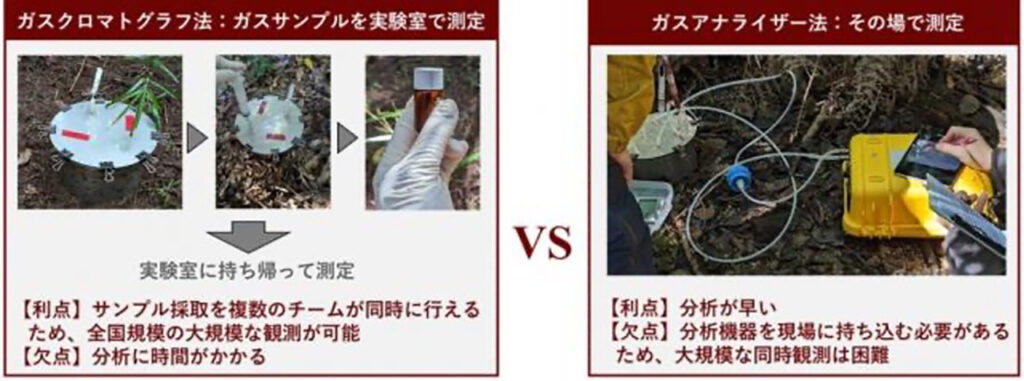Updated by "Forest Circular Economy" Editorial Board on July 12, 2025, 11:42 AM JST
Editorial Board, Forest Circular Economy
Forestcircularity-editor
We aim to realize "Vision 2050: Japan Shines, Forest Circular Economy" promoted by the Platinum Forest Industry Initiative. We will disseminate ideas and initiatives to promote biomass chemistry, realize woody and lumbery communities, and encourage innovation in the forestry industry in order to fully utilize forest resources to decarbonize the economy, strengthen economic security, and create local communities.
The Forestry and Forest Products Research Institute of the National Forestry Research and Development Institute has recently developed a new analytical method that can measure carbon dioxide (CO2) released from forest soil and methane (CH4) absorbed in about one-seventh the time of conventional methods. The new method enables wide-area and high-frequency observations and will contribute to the development of climate change research as well as carbon accounting and forest management.
The role of forests in absorbing CO2 is extremely important in the fight against global warming. However, there have been significant technical hurdles to accurately assessing the amount of CO2 absorption and emissions. The gas chromatograph method can be used for multi-point observations but requires time-consuming analysis, while the gas analyzer method can be used for quick on-site measurements but is not suitable for simultaneous observations over a wide area.
In the newly developed method, gas collected in the field is stored in a vacuum bottle and brought back to the laboratory for analysis using a gas analyzer. This significantly shortens the analysis time, and the accuracy in reliability indices such as linearity, repeatability, and robustness is equal to or better than that of the conventional method.

This achievement will make it possible to determine the amount of CO2 emissions and CH4 absorption in forest soils over a wide area and at a high frequency. The visualization of the actual status of carbon absorption and emission will lead to the advancement of forest management based on scientific evidence and the improvement of the accuracy of carbon credit calculation. It is also expected to serve as a research base to support policy decisions in the promotion of a circular economy based on forest resources.
The Forestry and Forest Products Research Institute plans to use this method to more accurately understand the impact of environmental changes on forest soils and to bridge the gap between climate change research and policy implementation.